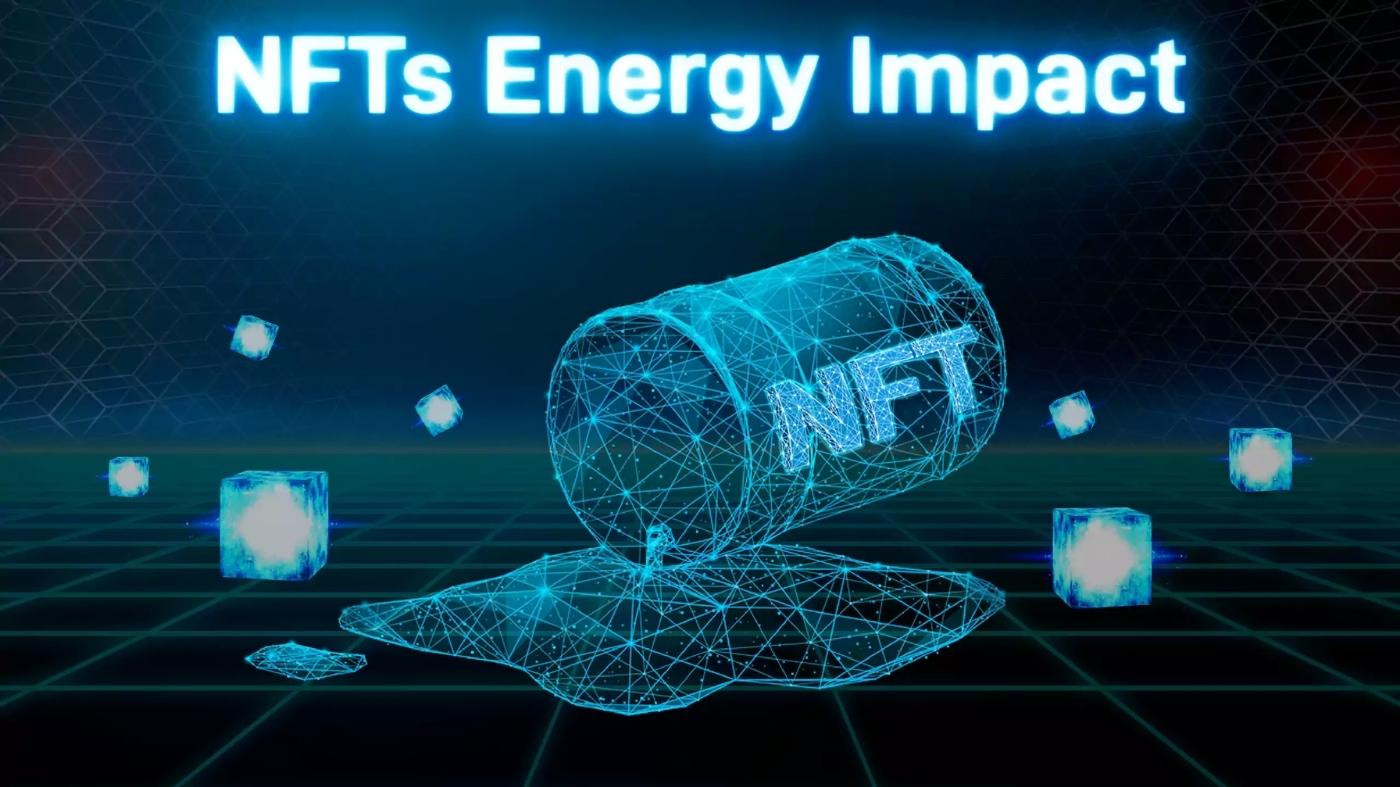











With NFTs being one of the most renowned pieces of advanced technology in recent years, many people are tapping into this new trend to see how NFTs can benefit them. However, some side effects may appear after using these new tech pieces. As NFTs are becoming more and more popular around the world, NFT environmental impacts have entered the popular discourse about NFTs as much as their fame and benefits.

When discussing the emergence of a new technological trend, one of the most popular discourses about it is the potential environmental impacts of such technology. While it seems that discussing this discourse may come off as being overly pessimistic about this new tech, such assumption nonetheless remains popular anytime a new tech trend appears.
A possible explanation for this mindset is because of the ongoing climate changes, and people are inclined to think if a new tech trend is actually environment-friendly or not. Something that looks practical and efficient might be dangerous to our environment.
This begs the question: are NFTs inherently dangerous to the environment?
In its current state of being, NFTs rely on dozens and dozens of computer systems just to process some of the transactions. Combine this with the fact that the number of NFTs is increasing gradually, more and more energy is spent specifically just to process all of these transactions.
From this point on, no wonder many people are becoming more agitated over the high amount of greenhouse gas emissions from processing so many NFTs. Individual NFT artworks alone can partially contribute hundreds of thousands to millions of tons of carbon dioxide emissions from their transaction processes. If these artworks can contribute to such a number of emissions, imagine the number of emissions from other NFT transactions.
When we think about it, the criticism over the environmental impacts of NFTs may come off as a latecomer compared to other major contributors of emissions, such as transportation and other things in our daily lives.
They have created a massive number of pollutants in our environment for decades now, but why should NFTs be the scapegoat for the single most severe source of emissions in the modern era?

As we know at this point, doing cryptocurrency transactions requires A LOT of energy to do so. In doing these transactions, users need to validate the legitimacy of each transaction to ensure that all of the involved actors are legitimate parties. By relying on solving complex mathematical problems, the process is also known as "Proof-of-Work" (PoW) validations.
At the same time, blockchain miners are also incentivized to mine for rewards that they can by participating in the blockchain. As a result, it becomes harder for people who want to illegally profit off the network as the security increases from the number of miners in the blockchain. However, this comes at a cost: the more secure the blockchain is, the higher the number of energies it consumes and the greater the NFT environmental impacts are.
Related Article: What is Proof of Work and Why It's So Important for NFTs?

For starters, people don't joke around when they say that blockchains require so much energy to do all of the transactions. Take Ethereum, for example. At the current moment, Ethereum has spent an annualized total of 81.59 TWh worth of electrical energy and 45.51 Mt CO2 worth of carbon footprint. When measured, both are comparable to the total amount of Chile's power consumption and Hong Kong's carbon footprint.
While these amounts seem alarming since they're comparable to a single country and one of the largest megacities in the world, people can misjudge these numbers, especially when compared to the total amount of emissions from other industries.
According to NYDIG, the number of emissions emitted by the cryptocurrency industry in 2020 sat on the lower end of the scale compared to other industries like aviation and air conditioning technologies. While bitcoin technology only spent around 62 TWh of energy in 2020, other technologies have spent at least more than 3000 TWh of energy alone, far more than bitcoin.

When it is already evident that other pieces of technology and numerous industries are far more responsible for the higher annual carbon footprint than cryptocurrency, it's easy to feel angry. It feels as if other industries are unwilling to admit their roles in contributing to carbon footprint and instead choose to blame the newcomer for the worsening climate changes.
However, to a certain extent, we have to believe that as more people use cryptocurrency for their needs, the number of emissions will also increase. Even if NFT's popularity somehow subsides, people will still use the blockchain in hopes of earning some crypto rewards from their mining.

So, what can we do to keep using NFTs while being mindful of our environment? Much like other technologies, people are striving to develop more eco-friendly means to use blockchain and reap crypto through mining. Before we talk about the solutions, we have to insist that the NFTs themselves are not the problem. It is the blockchain that requires more eco-friendly solutions to make NFTs more sustainable in turn.
On this topic, a particular alternative to the PoW method is the "Proof-of-Stake" (PoS) method. Compared to PoW, which will work on all of the transactions in the blockchain, PoS will make the miners stake in a certain amount of cryptocurrency that is going to be randomly chosen as a block validator.
In this way, PoS comes off as way simpler and more eco-friendly than PoW. However, we have to know that PoS itself has been a viable and ongoing alternative solution to PoW for some years now. Ethereum, in fact, is still trying to migrate its blockchain to PoS for the past few years. Despite hindrances along the way, if successful, it is predicted that energy consumption can be drastically decreased by 99.5%.
But then again, Ethereum is not the only blockchain people use to earn NFTs. Other alternatives such as Solana and Tezos are some of the most eco-friendly blockchains in the industry that you can use for your NFT needs. They rely on greener methods of PoS that make them emit a lesser number of emissions than Ethereum, such as the Liquid Proof-of-Stake (LPoS).
So, in order to solve the question of the supposedly excessive carbon emissions of NFTs and blockchains, we should endorse further development of these platforms and greener blockchain technology. While Ethereum is definitely on the right track to use PoS to decrease carbon footprint, we should also support the development of other greener blockchains to solve the issue as a whole.
From all of these explanations, we can see that the fears of excessive NFT environmental impacts are certainly exaggerated, especially when the industry itself has been steadily migrating to more eco-friendly blockchains in the past few years.
No Comment